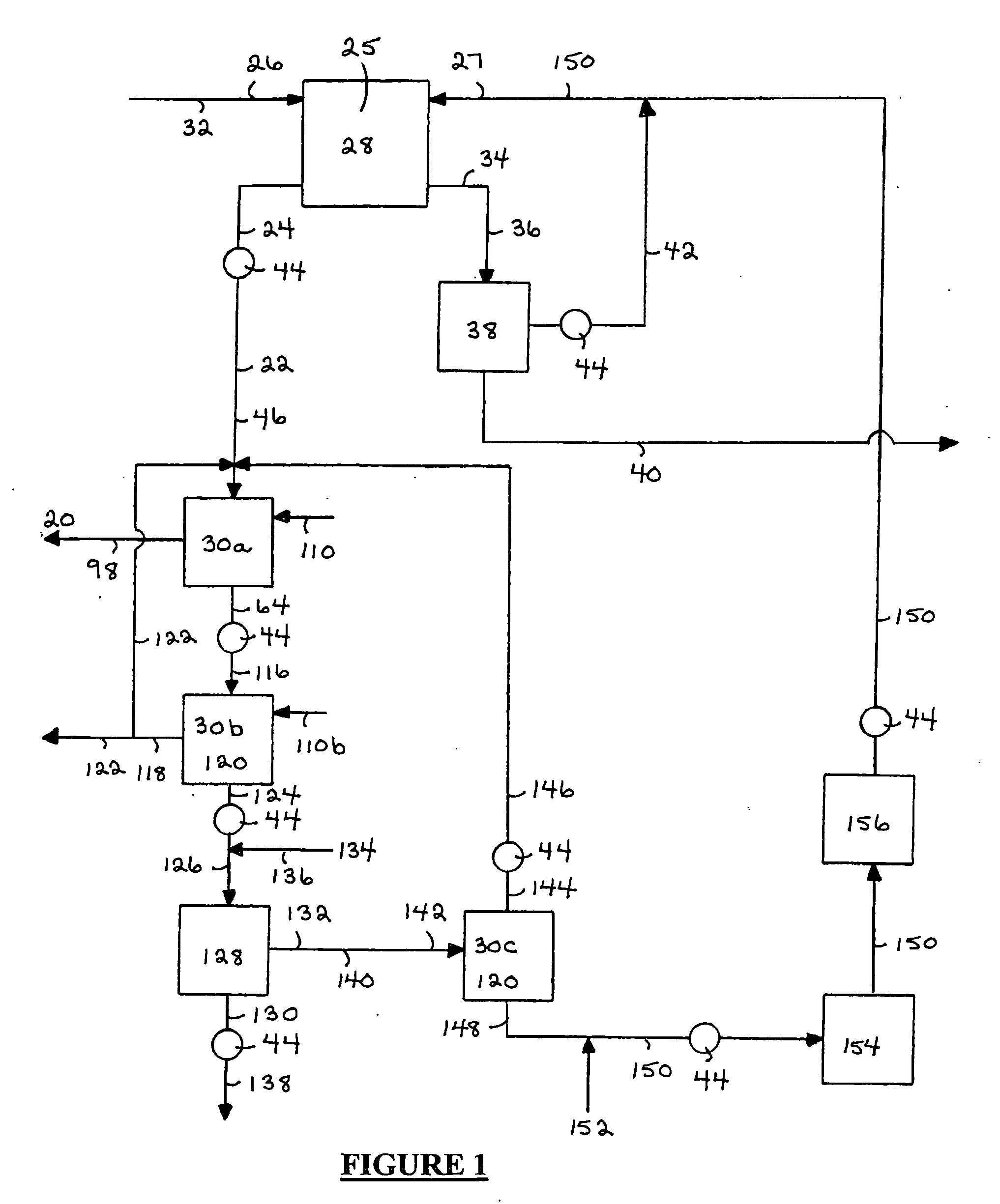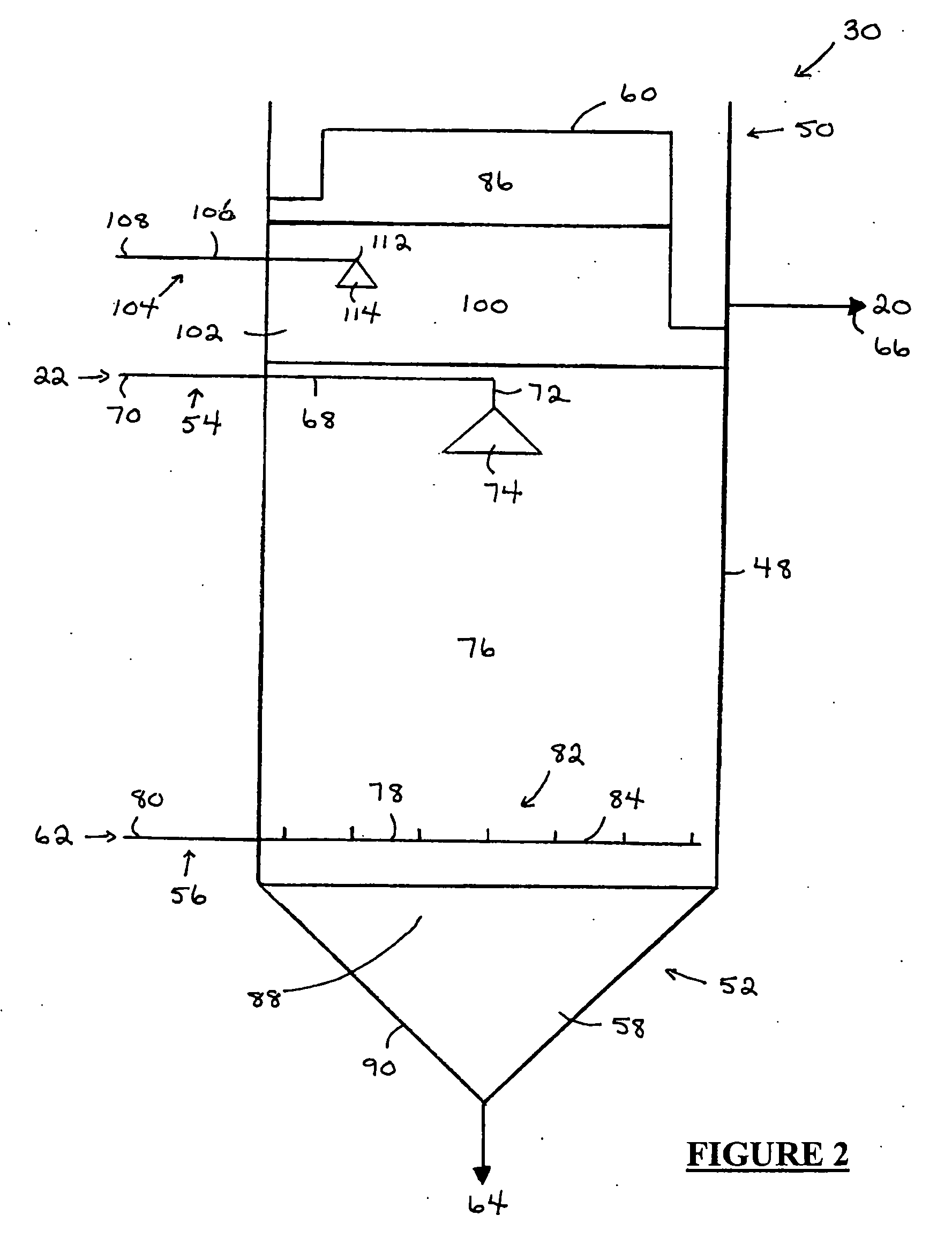Bitumen recovery process for oil sand
a technology of oil sand and bitumen, which is applied in the direction of sedimentation settling tanks, floating sedimentation devices, wet separation, etc., can solve the problems of less energy efficiency of the process and more maintenance of the moving parts, and achieve the effect of minimizing turbulen
- Summary
- Abstract
- Description
- Claims
- Application Information
AI Technical Summary
Benefits of technology
Problems solved by technology
Method used
Image
Examples
Embodiment Construction
[0122] Referring to FIGS. 1-2, the present invention relates to a process for recovering a bitumen product (20) from a feed material (22) comprised of a bitumen froth (24) or a component derived from the bitumen froth (24). The bitumen froth (24) is produced from a slurry (25), comprised of oil sand (26) and water (27), by a primary separation process (28). Further, the process is comprised of the step of subjecting the feed material (22) to froth flotation in a column flotation cell (30).
[0123] In the preferred embodiment, the oil sand is comprised of a matrix of bitumen, solid particles and water. The bitumen is comprised of heavy oil or viscous hydrocarbons. The solid particles are comprised of mineral matter including coarse mineral matter, such as sand and rock, and fine mineral matter such as silt and clay.
[0124] The bitumen froth (24) is produced from a slurry (25) including the particles of oil sand (26) suspended within the water (27). The slurry (25) may be formed in any...
PUM
| Property | Measurement | Unit |
|---|---|---|
| temperature | aaaaa | aaaaa |
| temperature | aaaaa | aaaaa |
| size | aaaaa | aaaaa |
Abstract
Description
Claims
Application Information
 Login to View More
Login to View More - R&D
- Intellectual Property
- Life Sciences
- Materials
- Tech Scout
- Unparalleled Data Quality
- Higher Quality Content
- 60% Fewer Hallucinations
Browse by: Latest US Patents, China's latest patents, Technical Efficacy Thesaurus, Application Domain, Technology Topic, Popular Technical Reports.
© 2025 PatSnap. All rights reserved.Legal|Privacy policy|Modern Slavery Act Transparency Statement|Sitemap|About US| Contact US: help@patsnap.com


